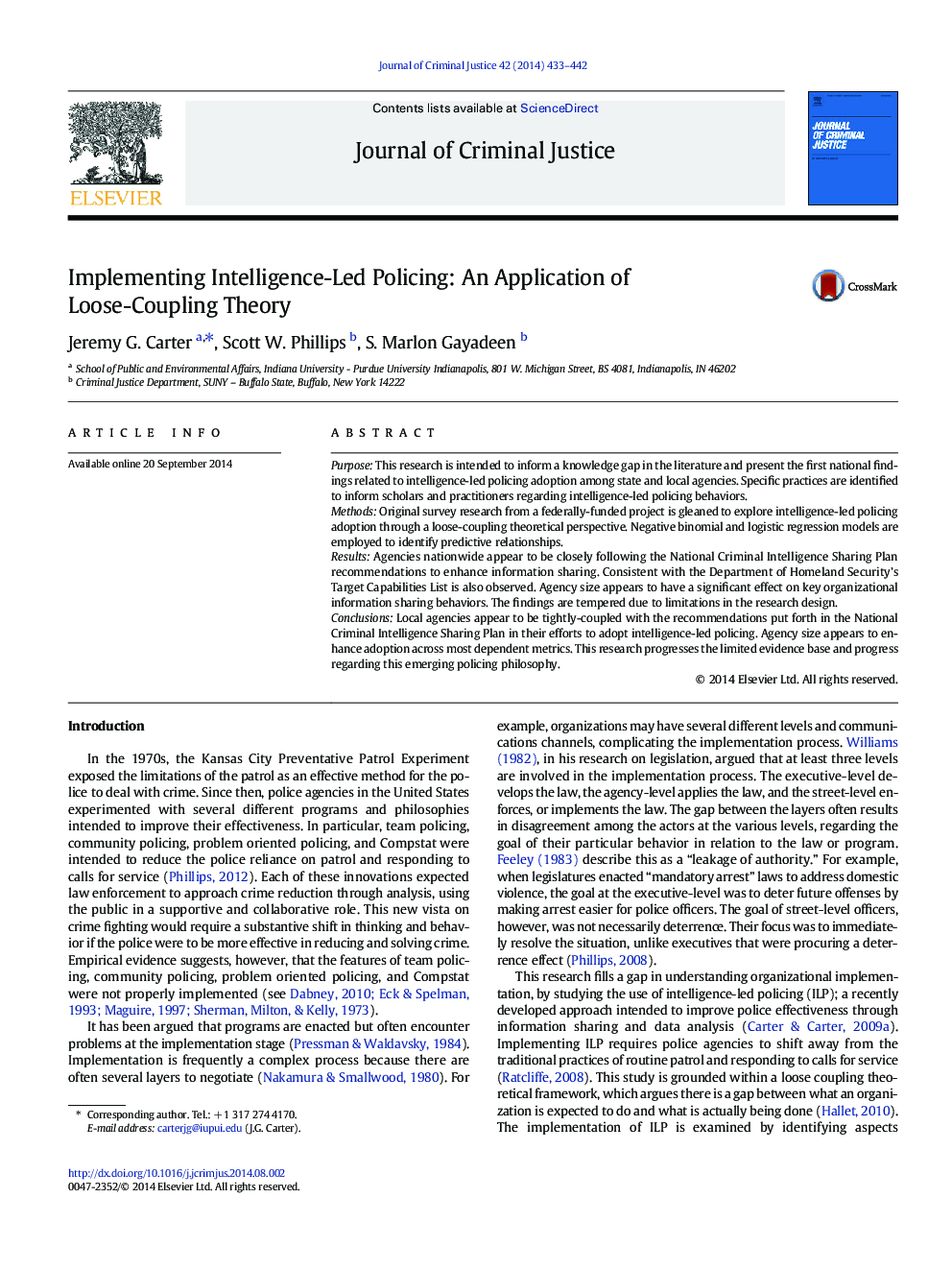| Article ID | Journal | Published Year | Pages | File Type |
|---|---|---|---|---|
| 882701 | Journal of Criminal Justice | 2014 | 10 Pages |
•National data of local law enforcement agencies is utilized.•Local agencies appear to be closely following federal recommendations for ILP.•Agencies appear to model their ILP capacity after the DHS target capabilities list.•Larger agencies have more relationships with organizations and create more products.•Training specific to ILP enhances the likelihood of adoption.
PurposeThis research is intended to inform a knowledge gap in the literature and present the first national findings related to intelligence-led policing adoption among state and local agencies. Specific practices are identified to inform scholars and practitioners regarding intelligence-led policing behaviors.MethodsOriginal survey research from a federally-funded project is gleaned to explore intelligence-led policing adoption through a loose-coupling theoretical perspective. Negative binomial and logistic regression models are employed to identify predictive relationships.ResultsAgencies nationwide appear to be closely following the National Criminal Intelligence Sharing Plan recommendations to enhance information sharing. Consistent with the Department of Homeland Security’s Target Capabilities List is also observed. Agency size appears to have a significant effect on key organizational information sharing behaviors. The findings are tempered due to limitations in the research design.ConclusionsLocal agencies appear to be tightly-coupled with the recommendations put forth in the National Criminal Intelligence Sharing Plan in their efforts to adopt intelligence-led policing. Agency size appears to enhance adoption across most dependent metrics. This research progresses the limited evidence base and progress regarding this emerging policing philosophy.
